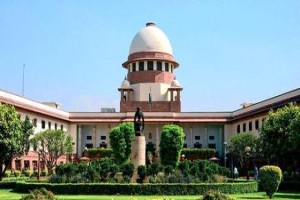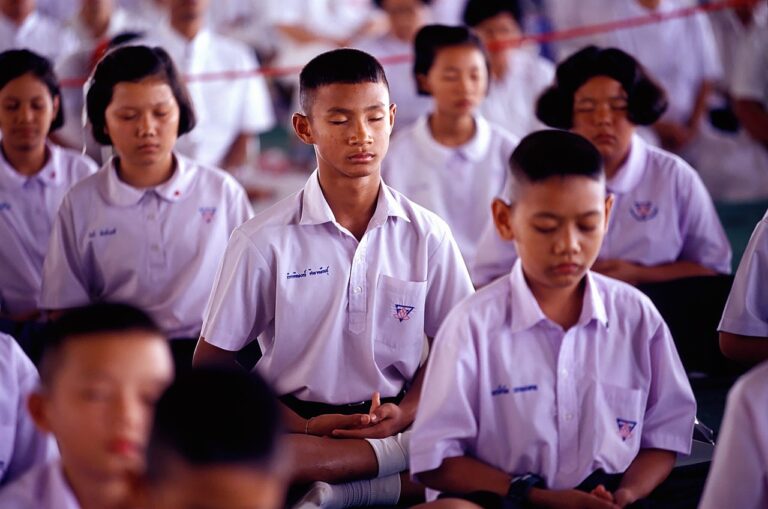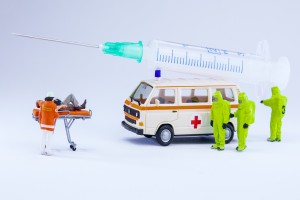
Corona Warriors: Dr. Gautam Singh (with bouquet) and his colleagues.
Medicare and the Second Wave
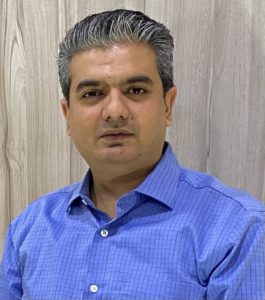 By Dr. Gautam Singh*
By Dr. Gautam Singh*
Those 30 days changed the way every doctor thinks!
I have been practising in Shri Ram Singh Hospital And Heart Institute, in the Krishna Nagar locality of East Delhi. We are a hundred-bedded hospital serving the people for the last 30 years.
Being the newly elected president of the largest branch of Indian Medical Association – IMA EDB, which has over 8000 members, and covers a large area of densely populated East Delhi, I knew that we had to be adequately equipped with PPE, masks, hand sanitizers and other covid protection gears.
IMA-EDB has always been in the forefront for academic activities in the country and is well known for its scientific and medical educational programs, cultural activities and community services. In the past it was led by some very eminent professionals such as former Union Health Minister Dr. Harshvardhan, late Dr Ashok Wallia (a former health minister of Delhi), and Dr. Harish Gupta (who is currently the only elected National Medical Council member from Delhi), among others.
The prevailing general thought though was that the second wave of COVID-19 pandemic may not have any major impact of our lives although many of our colleagues were talking about the increase in the number of patients and some of them serious.
But those 30 days changed the way every doctor thinks.
On April 22, 2021 I discovered that there was a heavy rush of patients who still required admission while all the beds in the hospital were occupied. This was the start of a number of challenges that we had to confront and overcome on a daily basis, including the challenge of getting Remdesivir for our patients, and a constant shortage of oxygen.
I immediately told the hospitals in the area to help each other and created group for better administration of the situation. There were about six or seven hospitals in each group and they were supporting one another by giving essentials and even oxygen. This strategy worked well as someone or other would come to rescue in times of need. About three days passed in this condition but on April 25, the oxygen vendor simply gave up. He plainly asked us not to admit any more patients as he was unable to procure oxygen cylinders himself – that he will not be supplying oxygen to us any more.
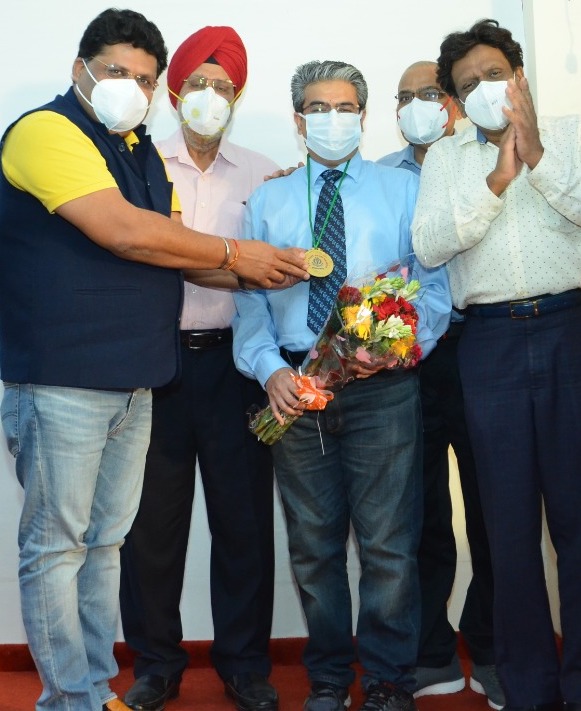
Until now all the hospitals were helping each other by lending one or two oxygen cylinders to each other in the time of need but now it seemed impossible to carry on further. I sent four teams of my staff on tempo carriers with ten cylinder each to various filling stations and asked them to be stationed there till they get oxygen. But to no avail. I resorted to social media making a plea for help and surely one social activist tried but to my despair got me just 4 cylinders for the night. I was in constant touch with other hospital owners in the hope of getting some help from them. But I knew that their situation was the same and mine.
Also read:
I was receiving constant calls from family, friends, politicians, IAS officers, Police officers, and even District Magistrates besides patients, pleading me to spare a bed for their near and dear ones. I constantly had an over full emergency department which was running 24 x 7 with no breaks and some of the doctors and staff were now working for almost more than 36 hours. I could realise that we were reaching our breaking point.
We were trying to help as many patients as possible but there seemed no hope of light at the end of the tunnel. There were news flashing in every news channel every day, every hour about how people were dying in hospitals because of the acute shortage of oxygen there. But the community of a few small private hospitals was able to sustain itself because of a good understanding among themselves and the help that they could provide to each other during the time of need. There were shortage of other essentials too, such as steroid injections, gloves, oxygen masks, catheters but that was manageable.
The saddest part was that the stockists were providing everything at exorbitant cost with no consideration of human sufferings. I feel this is high time that the government and the society at large learn from this horrible experience. We all must learn to share and help each other and then only such unprecedented situations can be dealt with.
Now it is time to look ahead and plan in advance. The best strategy will be to avoid the third wave of covid 19. Vaccination for all and maintaining good social distances along with wearing mask is the key to success.
As IMA president of East Delhi, I have initiated few programmes like “Mask Lagao Corona Bhagao”, and “ Dekho Koi Chhoot Na Jaye” to encourage vaccination in the community.
Last but not the least. There is a great deal of work that needs to be done for the doctor community. There needs to be better awareness of the Medicare Act amongst the doctors, the police and the general public , which gives protection and freedom to the doctor to work wholeheartedly for his patients, while ensuring their safety. As doctors we need to concentrate on constructive and positive work for the society and fraternity.
*Dr. Gautam Singh is an eminent cardiologist, president of Indian Medical Association, East Delhi branch, and Director of Shri Ram Singh Hospital And Heart Institute, New Delhi


